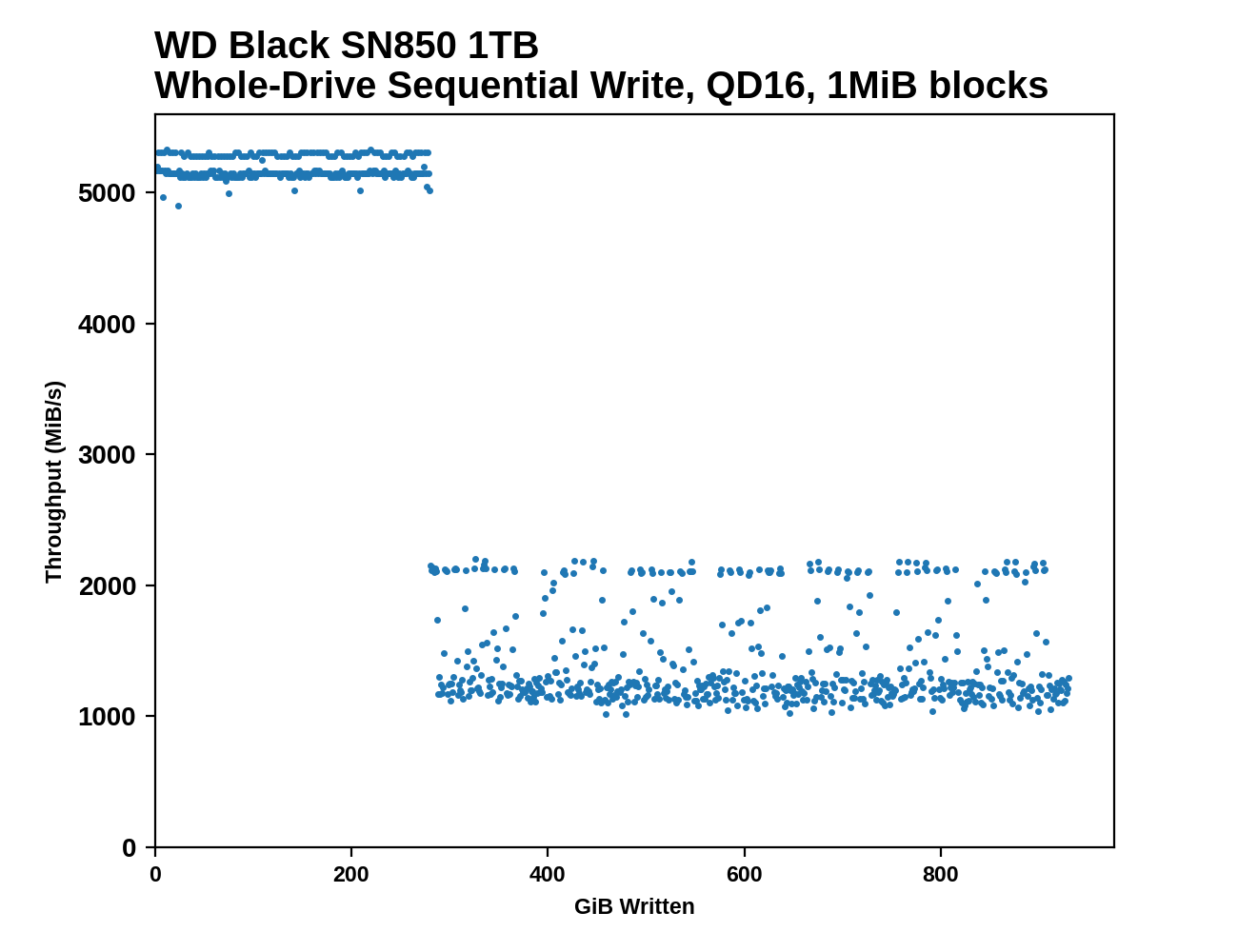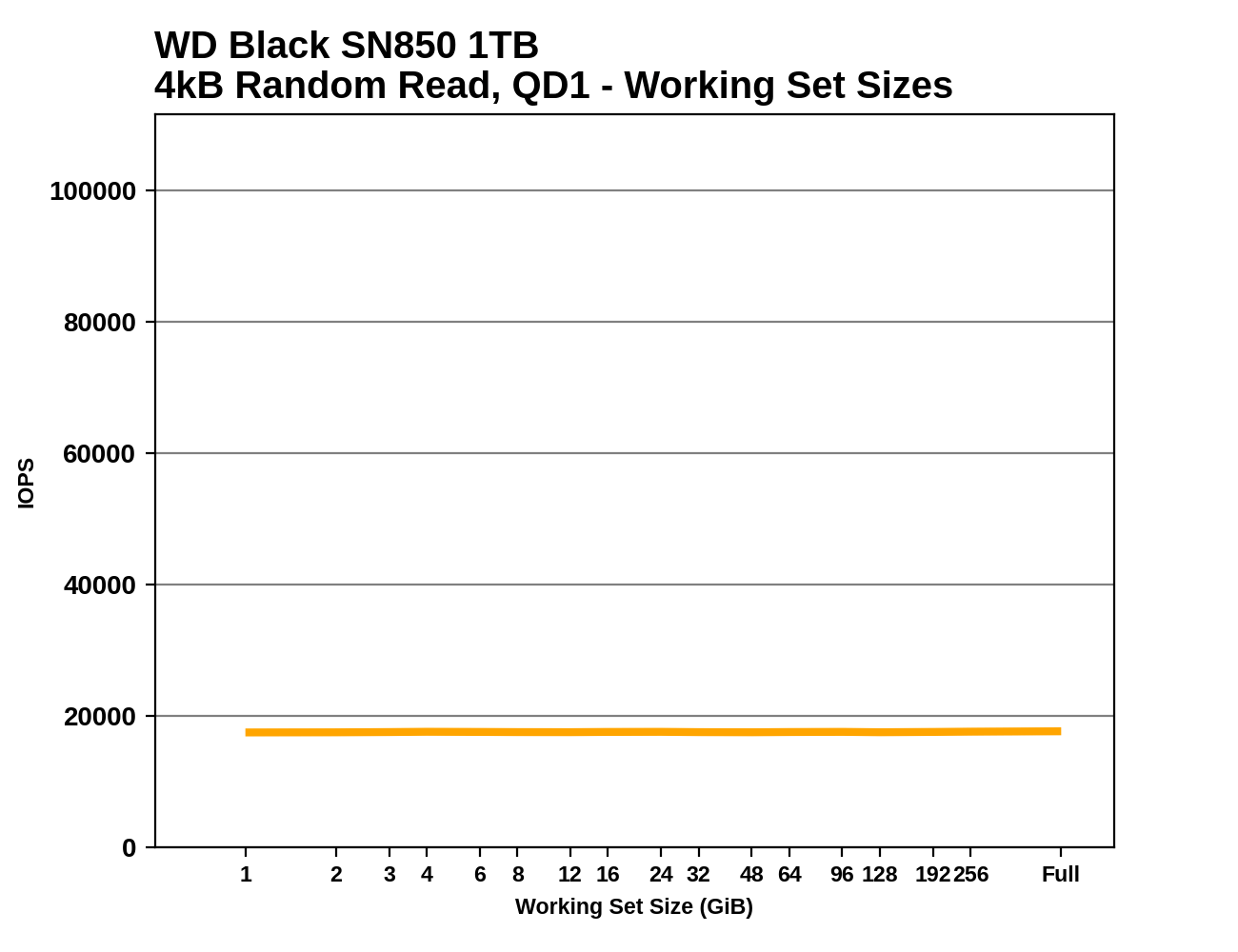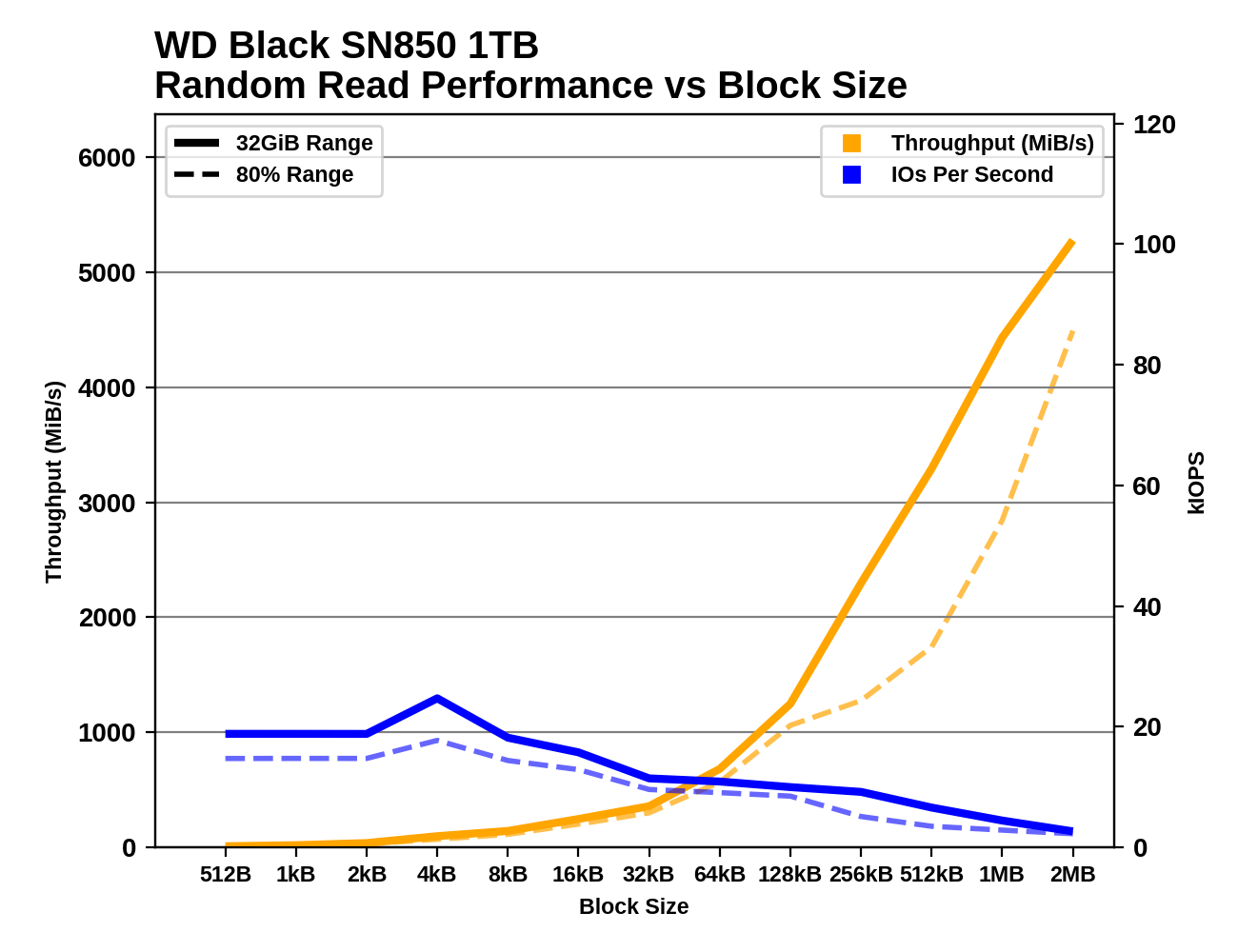The Western Digital WD Black SN850 Review: A Very Fast PCIe 4.0 SSD
by Billy Tallis on March 18, 2021 12:50 PM ESTAdvanced Synthetic Tests
Our benchmark suite includes a variety of tests that are less about replicating any real-world IO patterns, and more about exposing the inner workings of a drive with narrowly-focused tests. Many of these tests will show exaggerated differences between drives, and for the most part that should not be taken as a sign that one drive will be drastically faster for real-world usage. These tests are about satisfying curiosity, and are not good measures of overall drive performance. For more details, please see the overview of our 2021 Consumer SSD Benchmark Suite.
Whole-Drive Fill
 |
|||||||||
| Pass 1 | |||||||||
| Pass 2 | |||||||||
On the first pass starting from an empty drive, the WD Black SN850's SLC cache handles sequential writes at a bit over 5GB/s and the cache lasts for about 281GB before running out. That's a very large SLC cache size for a TLC drive, which is probably why performance is so variable after the cache is full. For the second pass of sequential writes, the cache size has been reduced to about 20GB, but the drive shows a second burst of 20GB of SLC-speed writes later in the test.
 |
|||||||||
| Average Throughput for last 16 GB | Overall Average Throughput | ||||||||
The aggressive SLC caching behavior on the SN850 comes at the cost of slower and less-consistent post-cache write performance, but Western Digital's earlier WD Black SSDs already behaved quite well here. The SN850 manages to keep write speed from ever dropping below 1GB/s, and the overall average across the entire drive fill is basically the same as the SN730, the OEM relative to the SN750 but with the same newer flash as the SN850.
On the second sequential write pass when the SN850's variable-size SLC cache is already at its smallest, post-cache performance is extremely consistent and faster than any other TLC SSD we have tested, but still 15% slower than the MLC-based Samsung 970 PRO.
Working Set Size
 |
|||||||||
Most high-end drives have boring and steady results on this test since they don't skimp on DRAM. The QD1 random read latency for the SN850 is better than any other TLC drive we've tested, and only 4% slower than the MLC-based Samsung 970 PRO.
Performance vs Block Size
 |
|||||||||
| Random Read | |||||||||
| Random Write | |||||||||
| Sequential Read | |||||||||
| Sequential Write | |||||||||
The WD Black SN850 is strongly optimized for 4kB IOs, with lower IOPS and throughput for sub-4kB block sizes on all four workloads. None of the other drives show such broad preferences for 4kB block sizes, but some of Western Digital's drives and a few others show this behavior on at least some of the workloads. This tuning pays off in some places, such as the SN850's leading random write performance for small block sizes (which is followed by the SLC cache running out while testing larger block random writes). There are some other weaknesses including poor performance for small-block sequential reads, but more importantly it has great performance for sequential reads with larger block sizes.










83 Comments
View All Comments
Oxford Guy - Monday, March 22, 2021 - link
What am I going to do about it? Tell the truth, aka whinge.Beaver M. - Friday, March 19, 2021 - link
I heard reports that WD SSDs cant do Windows sleep, which is a reason why Samsung did their own NVMe driver. Can you confirm that?Endgame124 - Friday, March 19, 2021 - link
What this review really says is we need less TLC drives, and either flat out all SLC drives or a new revision of the Optaine 905P.Oxford Guy - Sunday, March 21, 2021 - link
SLC shouldn't be so drastically faster than TLC if MLC is not.So, if the data does indeed suggest what you're saying then it suggests that Samsung's implementation of MLC is lacking. MLC should be between SLC and TLC in performance, not 'dead' (equivalent to TLC).
MS - Sunday, March 21, 2021 - link
I appreciate the idle power numbers but they are really meaningless. Why don't you show sequential and random write power consumption which should be in the 25 to 40 W range. Until the drive starts heating up and the performance collapses as a consequence of thermal throttling. Anything else is, er, marketing collateral at bestBilly Tallis - Sunday, March 21, 2021 - link
What are you talking about? The power numbers reported here are for the drive itself, not the whole computer system's wall power consumption. Even the Optane SSD included in this review doesn't hit 25W, let alone 40W. M.2 drives rarely break 8W. SATA SSD usually stay under 5W. And the idle power numbers are not at all meaningless; consumer SSDs spend the overwhelming majority of their time idle.kumataro - Thursday, March 25, 2021 - link
So the SN850 is faster when it is brand new and has > 80% free space... once the drive starts to get full the Samsung 980 Pro has better performance?529th - Sunday, April 11, 2021 - link
Just picked up a SN850, and the model number is WDBAPY0010BNC, however it was advertised as the model in this review, the WDS100T1X0E. What did I just buy?I've seen articles about companies changing part revisions that are not as fast as the ones sent out for reviews.
mrplus - Wednesday, April 14, 2021 - link
Hi, guys, lame question – does this pci-4 thing means that I need a new pci-4-friendly controller to use it? Or it’s just completely internal matter and any - for example - pci-friendly-usb3.2 external case will work with it?Billy Tallis - Thursday, April 29, 2021 - link
PCIe is backwards-compatible: the host and the device will negotiate the highest link speed and widest lane count that are supported by both end points. So a Gen4 SSD in a motherboard that only supports Gen3 will work fine, limited to Gen3 speeds. A Gen4 SSD in a USB to NVMe enclosure that only provides PCIe Gen3 x2 to the drive will likewise be compatible, but with severely crippled performance.